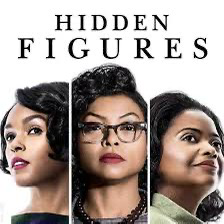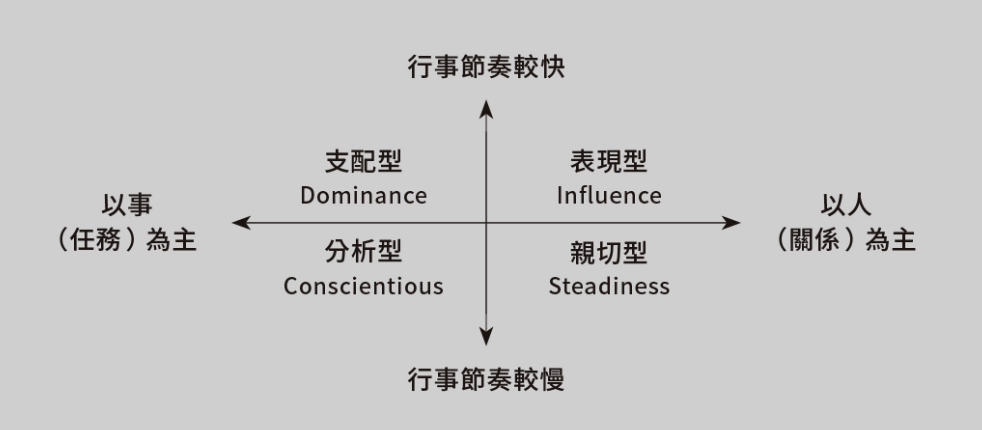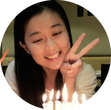|
讀書會裡有位明德國小的孩子,說這本書他看了十三遍,我笑了。覺得孩子真是可愛,這樣著迷的程度,真的是活靈活現的呈現了愛不釋手。孩子說,他下課看,找到空擋就看。大概所有的心思都在角色的悲歡離合裡了。
看了前幾頁的人物介紹以及地圖,老實說這些並沒有特別吸引我。等著書一開始,拾參和他夥伴們的語言生動的呈現了北地曠野孩子的生活與氣慨,我開始佩服作者的功力。等到相關人物一個個登場,我開始感受到這個故事在時間軸上鋪陳三位一體的禪學抑或是道學。 最後一章,真的讓我淚流不止。一個十三歲的孩子,竟得領悟這樣的人生道理,做出那樣的選擇,實在令人心碎。父母輩的業,為什麼要孩子來承擔?累世的業又要何時才會停止?什麼是開悟?何時又是個頭? 面對人性之惡,拾參與雅庫最後的一句「生生世世不再為人」,很是令人震撼。這樣對人的鄙視與反叛,讓西遊記裡的老孫,更加迷人了! Monica Burns in her new episode 10 tools for creating quizzes
(classstechtips.com) curated 10 tools for teachers. Not only in creating quizzes, they could be use in different part of the teaching or prepping process. Some AI tools that I have been using heavily with my class are Edpuzzle: Multiple questions are great to check the students’ understanding of visual input. Videos provide better context with just a few pictures. I also love how it allows open ended questions with written or oral responses. It is even workable for middle/lower graders. Chatgpt and Claude: It is amazing when I start to test their limits. During the prepping process, I can basically discuss/test different teaching ideas with these two bots. It is efficient in the brainstorming stage and it is powerful to generate ideas. Burns’ suggestions regarding how to more effectively use them with prompts are very useful. I might include information like,
There are some great AI tools that I tend to use less in the class such as Kahoot!: it’s very exciting with the competition and multiple choice questions. I found, though, in my class, the students tend to bash in short-term excitement and lose the focus for deep thinking and discussion. Perhaps I need to try a different way to moderate the process. Tools that I wish to try in the next semester: Diffit: Supposedly, it creates supplemental resources for indicated grade levels. I am not sure yet about its data pool. I hope it will also work for our students outside of the US. Briskteaching: It is another quizzical generating tool with chord extension. (It feels to me the class time is filled with quizzes for the students…) I have also read other teachers’ positive comments of such tool. When I tested it, it seems more useful for more mature students with complex contents. Socrative: Like Mentimeter and Peardeck, their interactive features allow teachers to monitor students’ real time progress. It could work perfectly in a discussion class. MagicSchool: Like Twee, it’s a platform containing lots of tools such image/voice generator, speech-to-text, video script… for teachers. They don’t come free. For teachers who mostly create their own teaching contents without textbooks, it is wonderful and time saving. This book was first introduced in a class of my Fulbright exchanging period. I was deeply moved by pedagogy introduced in the book and also puzzled by how it could come to life, Inspired by the American “everything is possible” culture, I wrote to the author. Surprisingly, I got invitation to stay for a night with her and observe her class…
The book starts with an illustration of how discussion was fostered in the classroom- making connections through events that children encounter in the class, taking care of each other’s feeling aligning two simple and concrete classroom rules - be kind and work hard (because we want to flourish as a whole).
資深AI 應用人程世嘉以麻瓜也可以懂的語言爲一般民眾提供了許多破解AI的迷思與實際的應對策略。這兩個月他也頻繁的進行宣傳,跟幾位知名的主持人進行了很精彩的對談。(有這些不同領域的對談真的很拓展思維)
書裡面兩個我認為最關鍵的核心思想是:
這些思維是對未知恐懼的解放,對於進入未來有個堅實的立足點。 感覺振奮人心 ! References:
Starting from week 9, we introduced space competition to the third graders, echoing our moon festival and also the launching of the Artemis Program. My partner continued with festivals around the globe, and I stuck with space competition and someone delved into social and gender injustice. Conclusion first: this unit continued for almost an entire semester because I only have one session with the children. For the third graders, some aspects of social segregation and gender discrimination are very difficult and abstract due to their insufficiency of world knowledge. So I came to a debate of how to really introduce cultures to them: should I go for the broader topics or stick with one but go deep. Am still trying. Week 9-13, 5 periods, 200 minutes, we watched parts of the movie Hidden Figures. We talked about how black people and women were treated in NASA back in the 1960s. With some explanation of historical background, I would say visual images are perfect to portrait that injustice. Kids could tell from the facial expressions, words and actions of the characters. They nailed it with a lot of why questions. Week 15 and 16, I continued the time line to the Artemis program. There is obviously a progress of inclusion, when we see the gender ration, Victor Clover and Johnny Kim. I hope they can see that the change will happen in progress if people try. Still working on it.
Week 17, I am hoping to introduce some other injustice in the world and then circle back to the idea that change will happen when we try. 談及向上管理的書不少,網路上也有很多討論的短文。我不太喜歡厚黑學一類目的性太強的教戰守則。畢竟爾虞我詐的人生太勞心,我可能很難快活長命。 張瀞仁的這本書讀起來非常舒服,是一種純粹乾淨的舒服。沒有壞念想,只有一份同理心。每個人在對自己的角色任務都有不同的解讀,也因爲個性、文化的不同有各式各樣的詮釋與行動。有些人的表達方式很隱晦,只能不斷試誤飲恨;也有些人表達明快容易配合。書裡引用Dr. William Marston 的 DISC 分類法,其實是ㄧ個簡易應對指南,容易上手。仔細思考一下,我曾經或是現在¥的主管們,也好像真的能夠用這分類法排排坐好!(圖摘自p173) 總的來說,書裡用了 Jennifer Kahnweiler 的話總結了此篇:「你的目標就是要幫你的主管達成目標,而他的工作就是要協助他的主管目標。」說的簡單,但操作起來的困難就是「我不認同」跟「我不想」。結果人生最大的敵人還是自己。
跟著美國老闆工作的那幾年,真真切切的領悟到了宏觀和目標。大部分的同仁都是以這樣的理念和想法彼此照應著,後宮那些個你爭我奪的套路真的是玩不起來,頻率對不上的都是悄然離去。在那樣的磁場裡真的少聽到「我不想」、「我不要」或是「為什麽是我」,更多的時侯是感謝與「我們」。 想念啊! 張瀞仁這本書雖然是寫給內向者的工作指引,但老實說對已在職場上的人是一種提醒,對於大學生或是初出社會的青年這樣ㄧ步步手把手解釋引導,真是佛心來著,我尤其推薦書裡解釋 Small Talk 的篇章。 對於還在英語學習階段,即將邁入雙語或是英語教學的學生們,這真的是寶典!哈哈哈哈!
Small talk, 對外國的孩子可能相當習以爲常,但對於臺灣的孩子(起碼對我來說),尤其是要自在的以英語進行small talk ,的確是ㄧ個需要學習的技能。 因爲是外語,平常沒在使用的話,ㄧ下子要口若懸河,看起來自在,無論你是外向或是內向我想都不容易。所以如書中所言,準備是重點,曾練習過的才是自己的。也因爲是聊天,「讓聽者愉悅地接受才是溝通的重點。其實,被討厭與讓人印象深刻只有一線之隔…。」 網路上說明亞洲大媽或大伯聊天方式令人哭笑不得的梗已太多:ㄧ定要負面評論一下你的外表、容裝、穿著,然后給個建議覺得為你好;一定要調查一下你的身家背景,還是要給個建議,告訴你如何可以更好(我有想知道嗎?);本來以爲,時至今日這樣的情形已經不多,喔不,上週參加研習還真有個教師夥伴活靈活現的又在我身邊演一回。 (對,我就想這樣穿,不行嗎?) 如果,我們平日溝通的方式僅是向師長、家人抑或是某些酸言酸語的直播主取經,那真的要好好學習ㄧ回何為讓聽者愉悅接受的小閒聊。平等的尊重,我們似乎還有努力的空間。
真實的經驗是,我也是個太小心謹慎的人。第一次的國外小旅行,當地朋友開心聊完自己,回頭問了我: So, what’ your story? 我驚嚇的當場逃走! If I can do it again, I would definitely have lots to share and say about me, my country and my great experience in that trip. 🥹 Our education bureau is developing modules on PE lessons for teachers to learn to teach PE. I think this is a great idea. Simple and effective in terms of in-service teacher training. I actually benefited it a lot when I first started in 2017. Attending the second time this year, it feels that the model is more clear and easier to execute for novice PE teachers. Having the opportunity to learn from the experienced and the best is a blessing. The model is GBODY. I don’t know where they got this acronym but it’s easy to remember. G stands for warm up and preparation. B stands for skills building. O refers to communication and modification with the students. D means differentiation. Y is the final wrap up and cleaning up. Easy to remember now, but it took me a long time to figure out the teaching process in 2017. For lower graders, the lessons were contextualized with their world experience, such as animals imitation and road safety. I think the idea of road safety is fun to play with. Kids love the game of 紅綠燈 - red light and green light. For CLIL lessons, it’s also easier to develop chants and interaction when introducing this idea. Here is an example. Red light, stop. Green light, go. Yellow, yellow, keep an eye out. The lesson can then incorporate various animal walks and skips. Here is a screenshot of the differentiated stage (D) of GBODY.
The same process can also be used to teach gymnastic rolling, like how the panda rolls in the video clip. Teaching lower grade PE is just too much fun! This semester I start teaching third grade international Culture Education(ICE). Totally clues.
For one, I know very little where they are cognitively. Every year, the maturity of kids seem differ in some way. It’s easy to chat with them about daily routines, friends and school work. But how to really extend their knowing to a bigger context without having the sense of delivering bookish knowledge. It’s hard. Secondly, I have completely no idea what are the big ideas behind the stories or texts I prepared for the kids at this point. It feels that we are just chitchatting in the class about recent news. But where am I taking them? Or do I even need to take them anywhere? Perhaps the purpose is to give them a different adult perspective on current issues. On a note discussing with my fellow colleagues, their views struck a chord. We are teaching public school children. A lot of them may have never experienced having a decent conversation about the world or the country they live in with adults. This is a great opportunity for them to experience such and perhaps hearing various viewpoints from people other than their family. I am not sure whether it’s a public school thing or not. I could have gone to a private school when I was little, I remember my parents were busy and we hardly had time to have such discussion as well. So I guess just discussing may be good enough at this age. Compared with IT, PE and English class, where the objectives are sound and clear, ICE at school seems fluid. I know the kids have to achieve a certain goal and obtain certain skill sets. But what are they? Children at this age do not yet have enough world experience to discuss National matters. (?) I am totally blind here. It’s week 8. I am still learning. We have completed interesting topics, such as the Fukushima nuclear plant water release and the Asian Game. Space competition is our current topic. Kids are very responsive and amazingly talkative. They are inquisitive and creative with solutions. I wish I could have time in class to address to their questions individually. Discussions are fun. I am not sure whether I am on the right track but I hope they at least learned some facts and at had fun. A colleague told me she started taking online English lessons to brush up her English skills. Kinda interesting and I signed up one. For one, I want to see how experienced teachers conduct a language class with a small group of people. I also want to practice the language on topics I am not that familiar with.
The first lesson was great. The teacher divided the time into two sessions: 1) conversation-how to really take turns to build the content on others’ response 2) discussion-read aloud a short paragraph, explain the vocabulary, trouble-shoot and share ideas. I truly enjoyed the first part! Gosh! Having a proper conversation without asking questions is so hard for me! It really takes practice. And studying the vocabulary words, ChatGPT really comes in handy. Some of the words are difficult to grasp without enough contexts. I asked ChatGPT to give me 10 sentences for each words. Solid and well-rounded. On a side-note, I scheduled the lesson at noon time, for 80 minutes. It was very refreshing and better than a nap, at least for me. |
Winnie ChiuAn enthusiastic ELT/CLIL teacher, passionate educator, researcher, teacher trainer, Apple Teacher. Seesaw ambassador and curriculum developer. Archives
July 2024
Categories
All
|
Proudly powered by Weebly












 RSS Feed
RSS Feed